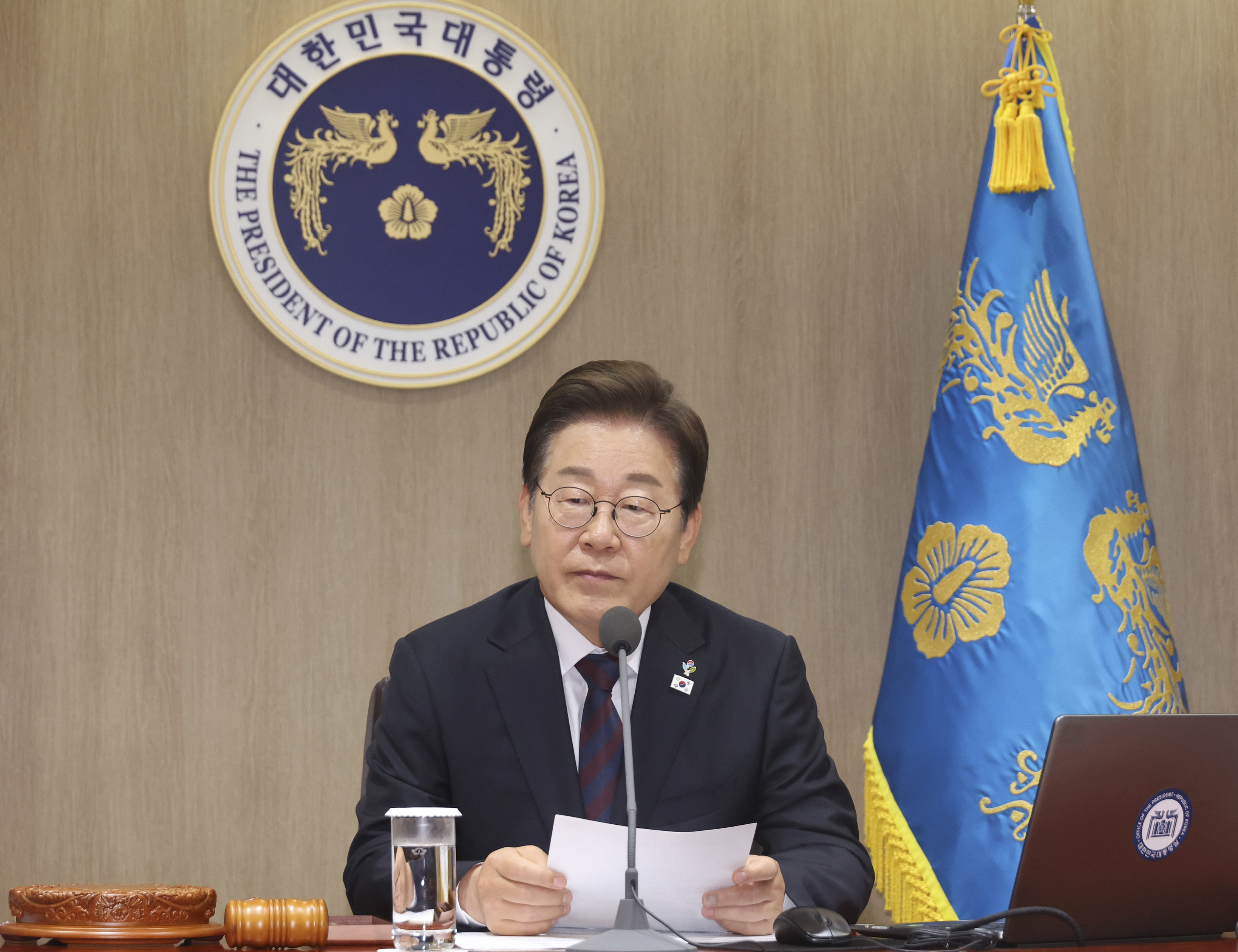
SEOUL - South Korean President Lee Jae-myung's administration on Thursday proposed 20.2 trillion won ($14.7 billion) for its first supplementary budget to bolster the Asian economy, weighed down by the US tariffs imposition and the sagging domestic demand.
President Lee, who took office in June, presided over a cabinet meeting and approved the extra budget bill that will be submitted to the Democratic Party-controlled National Assembly early next week for final approval.
Lee advocated an expansionary fiscal policy amid a dimmer growth outlook. The country's central bank slashed this year's economic growth forecast by 0.7 percentage points to 0.8 percent in May compared to three months earlier.
READ MORE: Seoul's good-neighborly policy adjustment a boon for regional peace and development
The seasonally-adjusted real gross domestic product (GDP), modified for inflation, contracted 0.2 percent in the first quarter from three months earlier after inching up 0.1 percent in the third and fourth quarters of last year.
Private consumption slid 0.1 percent in the first quarter on a quarterly basis, while construction investment tumbled 3.1 percent in the cited quarter, continuing to go down for the fourth straight quarter.
The central bank cut its benchmark interest rate by 25 basis points in February and May each to 2.50 percent after lowering it by the same basis points in October and November last year.
The budget plan included 10.3 trillion won ($7.5 billion) for a cash relief program, in which a different amount is paid to an entire population according to income brackets.
ALSO READ: S. Korea's Lee, Trump agree to work towards swift tariff deal, says Lee's office
The top 10 percent of income earners, or 5.12 million people, will be provided with 150,000 won ($110), while the rest of the population, or 42.96 million people, will be given 250,000 won ($180).
The second-lowest income bracket, or 380,000 people, will be offered 400,000 won ($290), while 500,000 won ($360) will be given to beneficiaries of the basic livelihood security program, or 2.71 million people.
The cash handouts, which can be spent through credit and debit cards as well as regional vouchers issued by local governments, will be given in two phases in accordance with the existing welfare standards.
To boost the lackluster property market, 2.7 trillion won ($2.0 billion) was allocated for the extra budget plan, and 1.2 trillion won ($870 million) was allotted to prop up investment in new growth engines such as artificial intelligence and renewable energy.
A total of 5 trillion won ($3.6 billion) was included in the budget to write off debt principals of microbusiness owners, financially support job seekers, stabilize consumer prices and support vulnerable groups.
To reflect the lower-than-expected tax income, estimates for aggregate revenue, including tax and non-tax revenues, were revised down to 642.4 trillion won (465.9 billion dollars) for 2025 from the original budget plan's 651.6 trillion won ($472.7 billion).
READ MORE: South Korea launches task force on US trade negotiations
The supplementary budget will be financed mainly through an additional issuance of government bonds worth 19.8 trillion won ($14.4 billion).
The managed fiscal balance, excluding social security fund, was estimated at a deficit of 110.4 trillion won ($80 billion) in 2025, while the ratio of the central government's debt to GDP was set at 49.0 percent.


